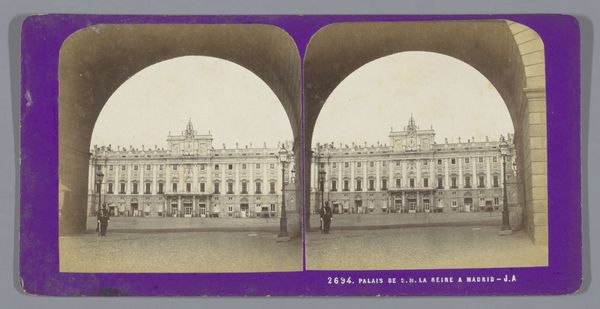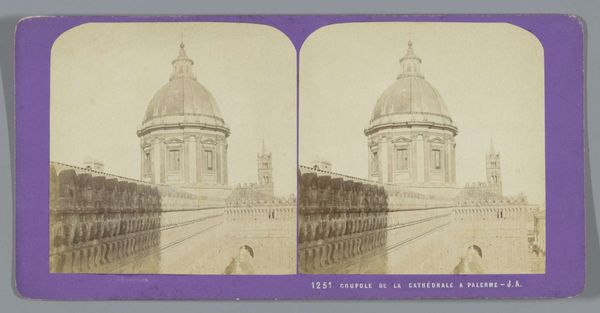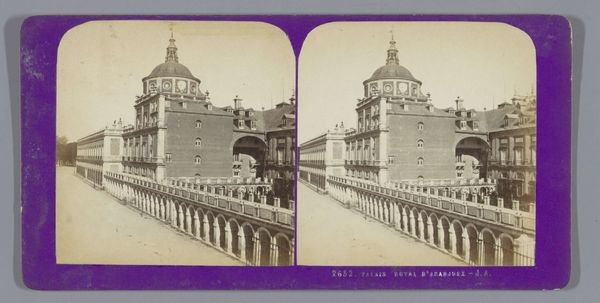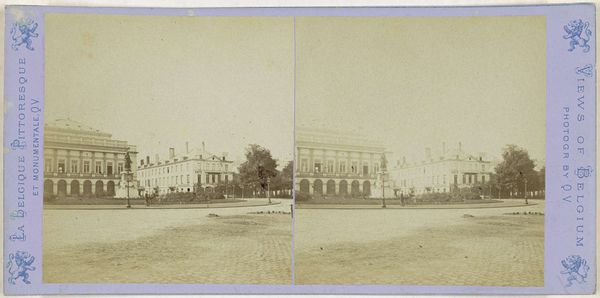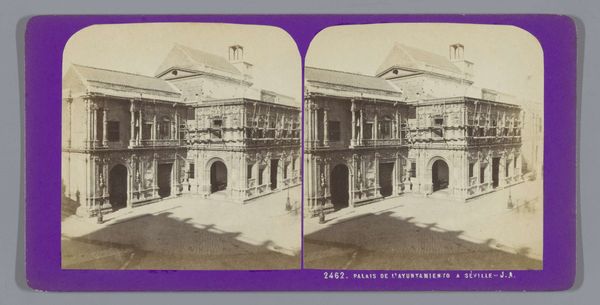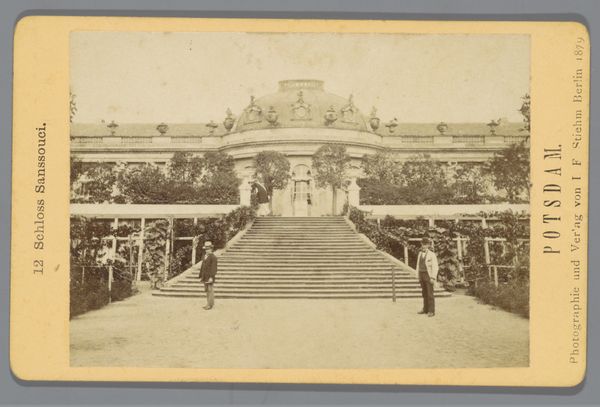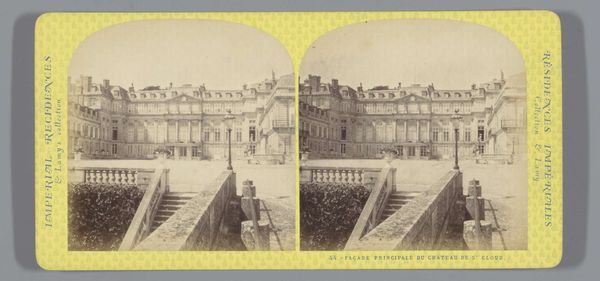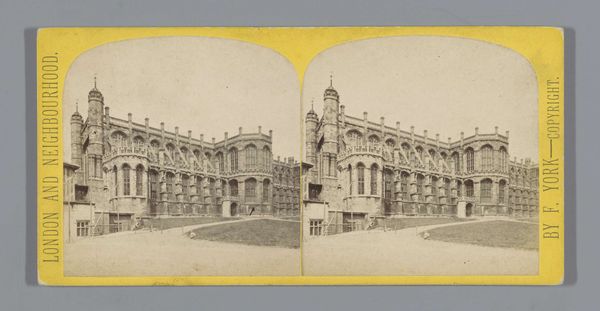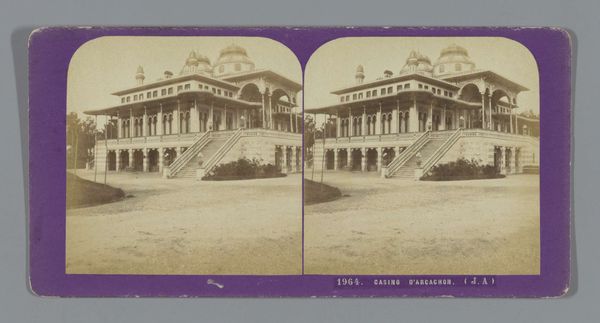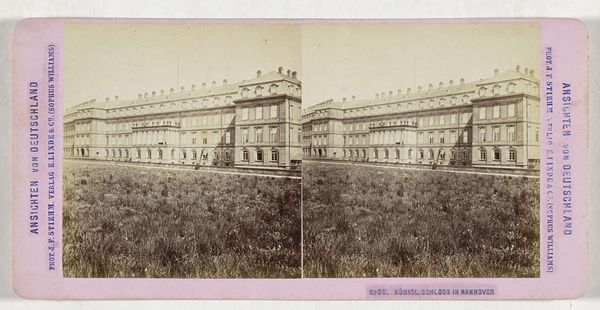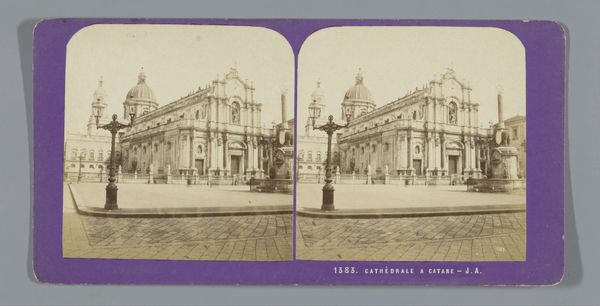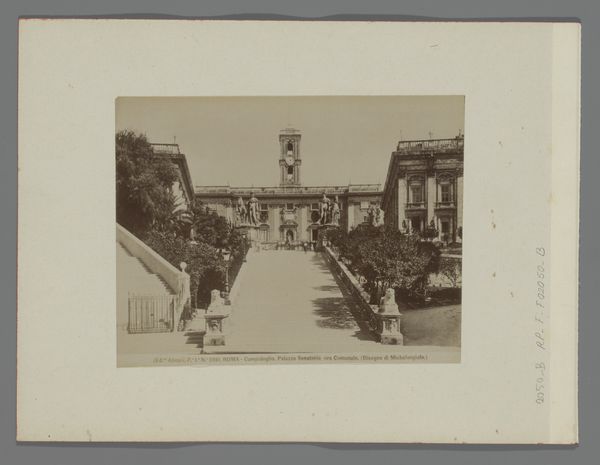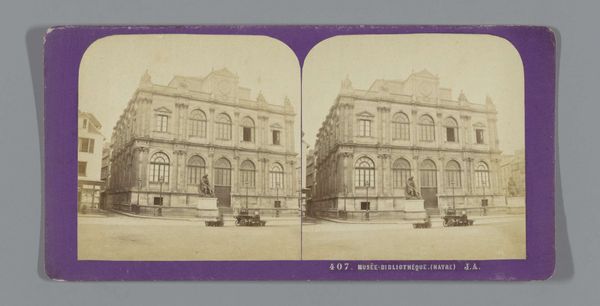
Dimensions: height 85 mm, width 170 mm
Copyright: Rijks Museum: Open Domain
Jean Andrieu made this stereograph of the exterior of Le Havre’s city hall, likely in the 1860s. The photograph, with its double image intended to create an illusion of depth, was a popular form of entertainment at the time. But beyond simple entertainment, this image speaks to civic pride and bourgeois values. The city hall itself, prominently displayed, represents the power and stability of local government. The carefully manicured garden suggests order and control over nature, reflecting the values of the middle class. Le Havre was a major port city, and its wealth was built on maritime trade and industry. This image, therefore, can be seen as a celebration of the city's economic success and the social order that supported it. Historians can contextualize images like this by researching the history of Le Havre, the development of photography, and the social values of the time. Art is always made in a specific context, and its meaning is shaped by the world around it.
Comments
No comments
Be the first to comment and join the conversation on the ultimate creative platform.
